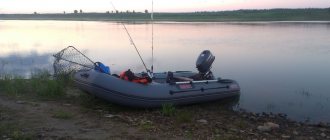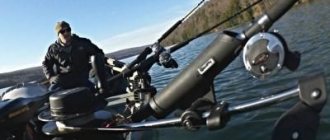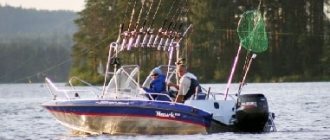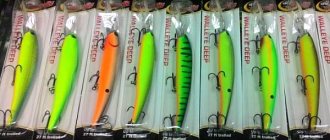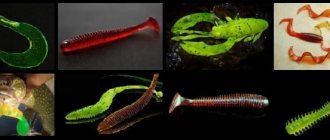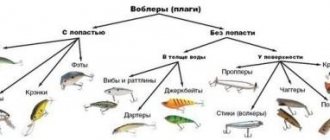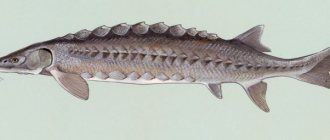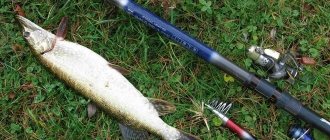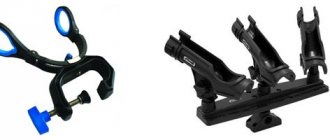Miniglider or as it is also called, a trolling boat is a device used by fishermen to troll for predatory fish.
A miniglider is a device used to remove baits. Boat fishing is used to remove bait from the boat and allows you to increase the number of spinning rods cast from one boat.
What does the size of a miniglider affect?
Minigliders come in three sizes: small, medium and large.
Main dimensions of minigliders:
- TX6 – spinners 5 cm and 7 grams in weight, jigs up to 10 cm (5 grams) wobblers up to 5 cm;
- TX12 – spinner 8 cm (15 g), jig 12 cm (8 g), wobbler up to 10 cm;
- TX24, TX22 – spinners 12 cm (50 g), jigs, baits 15 cm (20 g), wobblers up to 20 cm.
The size of the miniplane affects the bait release distance. Also, the largest size and depth of the bait depends on the size of the miniglider. The large size of the glider will allow it to be released over longer distances, which will also allow the use of the largest bait.
What lures are best suited for use with a miniglider?
When it comes to lures, there are several options that will help you catch fish of different sizes. It is worth noting that if you decide to use spinners as bait, then any experienced fisherman will tell you that this is a bad idea, so it is better to exclude this bait option.
The best baits to use are:
- Small wobbler (it has a personal small depression). This lure offers almost negligible resistance, and thanks to it, the device will function perfectly;
- Silicone products (those that have a small load are better suited);
- Oscillating spinners (Blue Fox spinner, Meps).
The miniglider will not perform as well as you would like if the bait is creating a lot of drag. It begins to nail to the wake source when there is a lot of resistance. Therefore, moving the bait a sufficiently large distance from the boat becomes almost impossible.
Mini gliders for trolling
SEA FISHING → TROLLING TACKLE →
8133
The American company Church Tackle produces minigliders and accessories for trolling in its own small production facility, which is also located in the USA. Most glider models were developed with the participation of professional trollers, therefore, all products are very convenient to use.
Minigliders are the most popular product of this company. Small size, no need for anglers to use powerful and expensive gear, as well as the ability to move several baits 10 meters or more from the boat at once, allows Church Tackle products to annually find their fans around the world.
Do you want to put four, five or six spinning rods on your boat and fish with them all at the same time, but you have a small vessel, for example a PVC motor boat? And a downrigger is not needed - the depths are shallow, and large trolling gliders cannot be installed. Do you want to fish a large area of water in one pass?
Then mini gliders for trolling are what you were looking for. Small size, minimal resistance when moving in the water, no need for powerful gear, all actions are elementary and you can move the bait 10 meters or more away from the boat without having any problems with fishing.
The mini glider kit includes a clothespin into which the fishing line is secured. After hooking, the line pops out of the clothespin, and the mini-plane for trolling slides down to the stop, offering no resistance when landing the caught fish. The American company Church Tackle offers trolling enthusiasts three sizes of mini gliders:
The TX-6 Magnum is the smallest miniglider. He is able to move the bait away from the boat by 2-4 meters. It is not recommended to place large baits on it. Optimally – small, five-sized wobblers, with a depth of up to a couple of meters. Light vibrators go well. With it you can use the most common spinning rods with an upper dough limit of up to 30 grams.
The TX-12 is a mid-size mini glider. This is the most common and probably the most convenient model to use. Its power is higher than TX-6, and it holds almost any bait, except for large and deep wobblers. The upper limit of the spinning test is more than 40-50 grams. The TX-12 mini trolling glider moves the bait away from the boat by 3-6 meters.
TX-24 or Walleye - two mini gliders of the same size, slightly different in design. These are the largest minigliders in the series. They can withstand even large wobblers and large deepeners. Take the bait away from the boat 5-10 meters. The upper limit of the spinning test should be at least 50-60 grams.
The TX-22 mini glider is a new product that is distinguished by its versatility. This mini-plane for trolling can be used both on the left and on the right of the boat. It can withstand even large wobblers and is capable of moving the bait away from the wake of the boat by 8-15 meters. The upper limit of the spinning test should be at least 50-60 grams.
All models of minigliders of medium and large sizes have the ability to adjust the loading plate to adapt to trolling lures of various resistances and for different weather conditions (waves).
You can read reviews about minigliders, in which the authors share their impressions and talk about the effectiveness of catching “on the track” with their help. According to the majority, this method of trolling fishing can significantly improve catches due to a larger fishing area and the possibility of variations with different depths and baits.
Mini glider Special TX-44 Super (universal)
Mini glider TX-6 Magnum, left
Mini glider TX-6 Magnum, right
Mini glider TX-12, left
Mini glider TX-12, right
Mini glider Walleye, left
Mini glider Walleye, right
Mini glider TX-22
Sinker set (12 pieces), 30420
RUB 2,230
Weight for fishing with downrigger (7.1 kg)
RUB 3,710
Plastic “tail” for cargo 1012
What type of trolling rod should be used for fishing with a glider?
One of the important parts of trolling fishing is the choice of spinning rod. Spinning is a sports fishing rod for fishing with artificial or natural bait, as well as a method of fishing using a spinning rod.
Fishing involves throwing bait into a body of water and bringing it back. Most often, they hunt predatory fish with the help of a spinning rod.
A spinning rod for trolling and a fishing rod for catching predators from the shore are slightly different.
When you choose a fishing rod, there are several details to pay attention to:
- Length;
- Form material;
- Build;
- Test load.
There are also several factors that influence the choice of fishing rod:
- Depth of the reservoir;
- Type and weight of baits;
- The number of spinning rods that are involved in fishing;
- The presence or absence of a current (its strength).
Pay attention to the length of the rod. A typical trolling spinning rod is usually 1.9-2.4 m in length. If you fish on board a boat, then you will need a longer rod - 2.7-3.0 m.
Trolling fishing, which uses several spinning rods, requires that one rod be about 2.1 m long, while the second should be 2.7 m long. For more productive fishing, you should lower the lines at a distance of 50-70 m to spread the baits in different directions.
The test load indicator is of great importance, since it affects the susceptibility of the gear. The test load indicator is influenced by the size and weight of the bait that will be used in the fishing process.
To hunt for large predatory fish, a large wobbler, large silicone fish and heavy spoons are most often used. For them you need to use a rod with a test load of about 50-150g.
Small wobblers, twisters and light spoons are used in shallow water. For them you will need a spinning rod with a test load from 5 to 20g.
If several spinning rods are used, then one rod is equipped with a light bait, and the second with a large spoon or wobbler.
Types of spinning rods:
- Composite Rods made from this material are of average elasticity, flexibility and strength.
- Fiberglass. Spinning rods made from this material are considered more affordable. They are used for hunting large fish.
- Carbon fiber. Such spinning rods are regarded as a rather expensive purchase. They are very durable and flexible.
NHNCH!
Which mini gliders are the most comfortable? For me, the choice is obvious; I have been trolling using mini-gliders for about ten years and during this time I have tried almost all the models that can be purchased in Russia and Finland.
I settled on a modified and improved version of the legendary Finnish NORPA mini-gliders based on the results of many years of testing. The ships are industrially manufactured from a special alloy of aluminum and magnesium, which is used in the aviation industry - because of this, they weigh almost nothing, but remain very durable. Laser cutting technologies are used in production, so all products are perfectly even and smooth.
These are very light and incredibly comfortable mini-gliders. Length 240 mm, while weight is only 131 grams (including clothespin)! These gliders perfectly move the bait away from the boat when trolling (fishing on the path) at a distance of up to 20 meters and do not interfere with landing fish in case of a bite. In addition, they almost never get torn off on a wave, unlike heavy plastic ones. I myself have been fishing with such mini-gliders for several years now and I strongly recommend trying them, they are truly the most successful and very correctly working design. Compared to any factory ones, this is the most convenient solution for many reasons: 1. Mini-gliders are equipped with excellent and very durable Scotty 1182 clothespins, and not cheap Chinese clips like other manufacturers. Even at the end of the clip’s service life (which is 1.5-2 years), you can simply replace it with a new one, rather than buying new mini-gliders, as you will have to do when using gliders such as TX-22 and the like, the clothespins for which are You won't find it for sale. 2. Light (by a wide margin this is the minimum weight of all the gliders that I have held in my hands), these boats have insignificant drag on the oncoming flow and thanks to this they work perfectly even on a large wave (they do not dive under the wave and do not shoot back in vain). In addition, with a lightweight mini-glider it is more pleasant to fish. 3. Sensitive. The behavior of the gliders shows the slightest bites, which means you won’t have to carry a 50-gram perch all your fishing trip, but you’ll get rid of it in time and won’t miss your chance to catch a real fish. 4. To fish with such mini-gliders, it is not necessary to buy an “oak” insensitive spinning rod. Due to the fact that they are so light, you can fish with them using regular spinning rods with a dough of 30-40 g. 5. They move the bait well away from the boat to the side, which allows you to use several mini-gliders on each side and, if necessary, use the most stubborn wobblers. For example, we fish with 8 spinning rods (4 mini-gliders on each side) and nothing gets tangled. It is only important to leave space in the wake so that there is room for fishing, and to follow the course, avoiding sharp turns. 6. Bright from above and from the side, visible in the water even at night - it’s easier to separate sides from other crew and easier to find a lost mini-glider. Moreover, from the side of the fish (i.e. from below) they are practically invisible. 7. These mini gliders are much cheaper than the popular Walley and the like, but they are actually better. In general, I advise you to try them in the new season. NHNCH!
Preparing for trolling fishing
You can’t start fishing with just a fishing rod and bait. For your own safety, it would be better to prepare for this event in advance.
Before you go fishing, the first thing you need to do is install your rod holders.
There are several options:
- Hammer nails into the side of the boat (in this case, you need to exclude the choice of an inflatable boat);
- Ready-made holders (they can be purchased at a fishing store), for example, the Avacha spinning rod holder;
- Use plastic tubes of different diameters (cuts of PVC pipe).
It is also necessary to make sure that the boat, without any exceptions, has the following items:
- life vest;
- stern oar;
- pole;
- wax for lubricating oarlocks;
- scoop;
- flashlight with spare batteries (for fishing in the dark).
Procedure for working with the glider
To ensure proper operation of the device, follow the instructions below:
- To begin with, in order to make the miniglider operational, you need to take a Phillips-shaped screwdriver.
- Next you need to get rid of the two screws on the front side of the miniglider.
- Using these screws, you need to tighten the supplied clip.
- After the manipulations have been completed, you can take the bait and lower it into the water, about 5-20m.
- We insert the fishing line into the groove on the tail side of the miniglider. You need to pull back the black lever.
- You need to secure the fishing line in the front clip (you can use a screwdriver to secure it).
- Now you can launch the glider into the water.
- Having released the glider at a sufficient distance, install the fishing rod in the holder and lock the reel brake.
- The process is then repeated for subsequent spinning rods.
Trolling with gliders
It is at this speed of 2 km, when the cord is released from the pulleys, that the gliders will best move away from the side of the boat and reach their “working position”. Since at the same time you will have to prepare your spinning rods and wind up the equipment, this speed will be optimal from the point of view that you will not overshoot a promising place known to you and will not be in a particular hurry, risking tangling the equipment.
The depth of the reservoir is a critical value - always use an echo sounder in order to know the depth and topography of the bottom, and monitor the trend in changes in depth, because it takes a lot of time to turn a boat with its gliders deployed.
If the weather is good, sunny and no wind, or the reservoir is subject to decent fishing pressure, release the gliders as far as possible from the side and, accordingly, use the longest possible line releases from the clothespins. If trolling is carried out in narrow places or along the edge of a flooded river bed, then release the glider to a minimum distance, for example, 30 meters and, accordingly, the release of the fishing line from the clothespin should be minimal, for example, 40 meters. We recommend pre-applying colored marks on both glider lines at a distance of 30, 35, 45 meters, so that when trolling with two gliders at the same time, release them from both sides at the same distance, then your boat will go smoothly at trolling speed and it will be easier to control , if you do not have an autopilot installed. We recommend keeping the operating speed of the trolling boat with gliders, depending on the depth, wind strength and wave height, in the range from 3.5 to 6.0 km/h.
Take the trolling spinning rod in your hands, hook the bait (a spoon or tackle with a dead fish) to the carabiner on its fishing line, lower it into the water along the side you need and release 30-40 meters of fishing line from the spinning rod’s reel.
After that, install a weight on the fishing line, depending on the depth you need. We recommend rubber-lead weights, which differ in color depending on weight. For example, the weight for trolling at a depth of up to 20 meters is black. Now increase your line release to 60 meters.
Using a metal latch, fasten the clothespin (line release clips) to secure the line of your trolling spinning rod on the towing cord of the glider and secure the line of the trolling spinning rod in the clothespin, then, rotating the spinning reel, allow the clothespin, together with the fishing line secured in it, to slide along the towing rod the cord towards the glider (ship) - to the place that you yourself deem necessary. Stop dropping the line from the spinning reel and the clothespin will stop. Place the spinning rod in its holder. The bait will come out onto the working horizon and will follow exactly at the distance from the side of the boat that you set, lowering the clothespin along the towing cord. Until the bite occurs, the clothespin will remain in almost the same place. We recommend installing the first clothespin to the glider not too close to the glider, so that it does not submerge in the water when rough. In the same way, fasten and lower clothespins with fishing line and other spinning rods from this side along the towing cord of the glider, distributing them “by eye” evenly among themselves on the towing cord from the side of the boat to the glider (ship). Likewise, after this or simultaneously, depending on the number of assistants on board, the glider's towing cord is armed from the other side. Taking into account the peculiarities of trolling on the Verkhnetulomskoye Reservoir, namely the presence of a large number of brown trout and pike, we recommend installing soft braided metal leashes of at least 60 cm in front of the bait and several carbines on bearings “in the coupling”. A leash will keep you bait when biting pike, and good carabiners will reduce the possibility of the line getting tangled from twisting when biting brown trout, which, as you know, when hooked, begins to rotate furiously around its axis and make “candles.”
Carefully observe the “working” spinning rods. As soon as a fish weighing more than 1.5-2 kg bites and hooks, the spinning rod will bend into an arc, and the fishing line itself will jump out of the clothespin. At this moment, you will need to slowly pull the spinning rod out of the holder and move with it to the stern of the boat to catch fish.
If the hooked fish does not release the line from the clothespin with its jerk, it’s okay, it’s just a small fish that was hooked. Take the spinning rod from the holder, go to the stern of the boat and jerk the fishing line out of the clothespin, now carefully fish out this “little thing” and then release it into the pond. At the end of fishing or when changing baits, release the line of one of the spinning rods from the clothespin and wind the line onto the reel. Replace the bait and repeat the “splashdown and insertion of the bait” procedure again. In this case, as a rule, you will need to install a new clothespin on the cord.
Keep in mind that if you use several spinning rods on a glider, then when you change the bait after biting or hooking on any of the spinning rods on one side, all working spinning rods move in the holder in such a way that the launched bait goes closest to the rest of the boat. Since, when biting, the fishing line jumped out of the clothespin, all such clothespins slide along the cord and accumulate near the glider itself. It’s okay, let them stay there until the end of trolling in this place.
If you finish trolling, release the lines from the clothespins with a sharp jerk of the spinning rod to the side and reel in the spinning rods one by one. Only after you have completely finished winding one spinning rod, take up another. Having collected all the spinning rods, slow down the speed of the boat and firmly, but carefully, by removing the lock and rotating the pulley, pull the glider to the side of the boat and remove it from the water, remove all the clothespins from the tow cord and put them in the container where you plan to store them (clothespins must have a permanent storage place, otherwise you will lose them all). Wipe the glider with a dry cloth and place it in its original place. Secure the pulley with the towing cord. Proceed in the same way on the other side. Now you can give full throttle and move towards “home”.
Miniglider Akara HW-S008
Let's look at a miniglider using the Akara HW-S008L and Akara HW-S008R models as an example.
Akara HW-S008L and Akara HW-S008R are small mini-gliders that are best used on bodies of water without waves.
The miniglider is a plastic device. It is 6cm wide and 13cm long.
Has two clamps:
- Rear clamp (holds the line on the glider; when the thread is displaced from the front clamp, the miniglider is lowered along the rope to the bait);
- Front clamp.
The miniglider line clamp has two screws:
- Left screw (adjusts the level of clamping of wire or fishing line);
- Right screw (allows you to fold the clip).
On the other side of the miniglider, a buoyancy block and a load are fixed; its position is stabilized by a screw, which makes it possible to modify the angle of inclination of the miniglider:
The spinning rod loads the glider quite intensively when retrieving.
